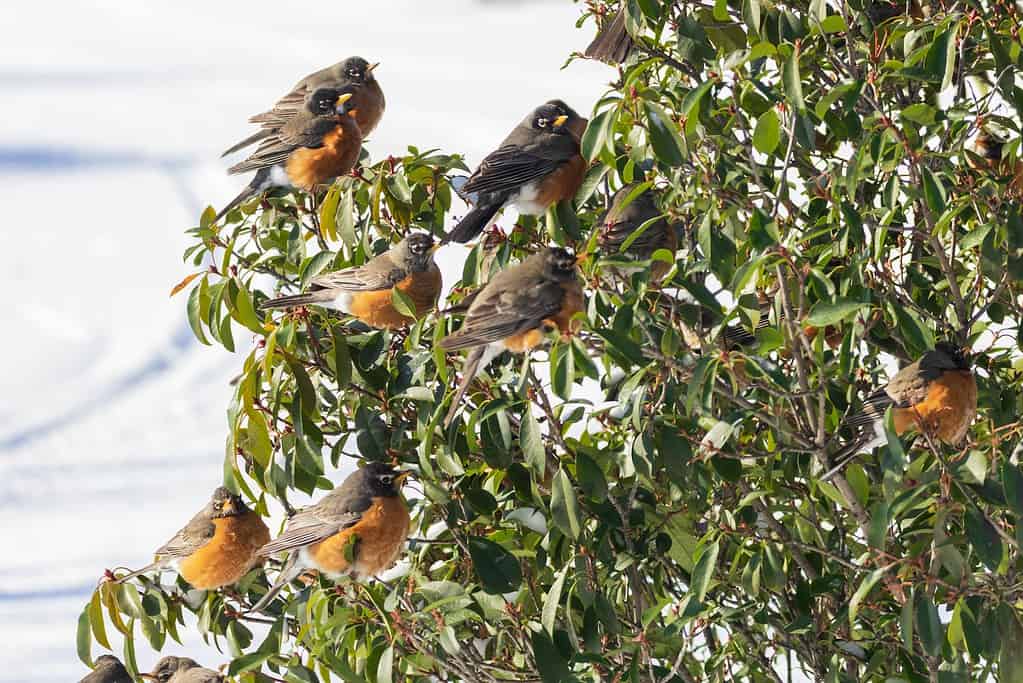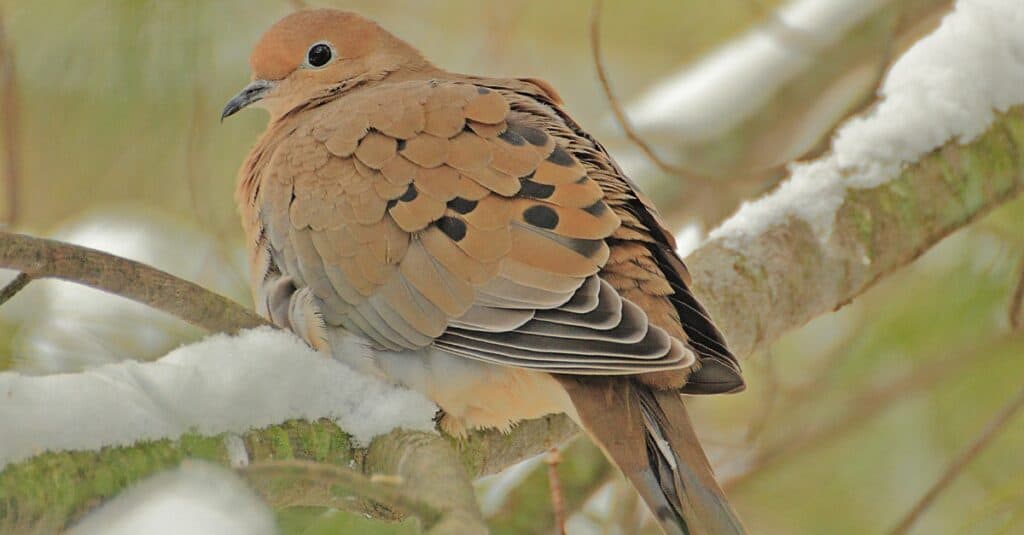Wisconsin is in the upper Midwestern region of the United States and part of the Great Lakes region of North America. Wisconsin borders both Lake Superior and Lake Michigan, the largest and third-largest lakes in the United States, respectively. Bodies of water like this are important habitats for many different kinds of wildlife, including birds. The state of Wisconsin is home to many interesting birds. This article explores the Wisconsin state bird, including its behavior, diet, habitat, and range. Interestingly, while one species is the official state bird, a different species serves as the state’s official symbol of peace. Let’s discover these two beautiful bird species!
The Official State Bird of Wisconsin

The official Wisconsin state bird is the American robin (Turdus migratorius). American robins are a passerine bird, also known as a perching bird, of the order Passeriformes. The American robin became an unofficial Wisconsin state symbol when school children voted for it during the 1926-1927 school year. Then, it became the official state bird when Wisconsin signed it into law in 1949. The American robin has seven subspecies, and Wisconsin is home to the eastern robin (Turdus migratorius migratorius).
The American robin is also the official state bird of Connecticut and Michigan. Wisconsin borders the Upper Peninsula of Michigan to the northeast, while Connecticut is almost 700 miles east.
Let’s first explore the amazing American robin, then afterward discover the other bird species that serves as an official state symbol of Wisconsin.
American Robin Physical Description
The American robin is a medium-sized bird, measuring around 9.1 to 11 inches long with a wingspan of 12 to 16 inches. American robins are generally easy to recognize because of their bright orange breast. Their heads and backs are brownish-black, and their throats have white and black streaks. Additionally, American robins have white arcs around their eyes. Their legs are brown, and their bills are yellow.
American Robin Habitat and Range
The American robin is one of the most common birds in North America. Their range covers nearly all of North America, except for extremely northeastern parts of Nunavut and Quebec in Canada. American robins breed across the entirety of Canada and Alaska, as well as in the lower 48 states of the United States, near the northern border. Additionally, Florida and Mexico are home to American robins during their winter migration.
American robins are incredibly adaptable and live in a wide range of habitats. Their breeding habitats are woodlands, farmlands, and urban areas.
American Robin Behavior

American robins sometimes form large flocks in cold weather.
©Martina Sliger/Shutterstock.com
The American robin is most active during daylight hours. They spend a lot of their time on the ground, where they forage for food. American robins’ social behavior varies greatly by season. During summer, American robins are less social and more territorial. However, during winter they tend to gather in large flocks at night. During winter days, the flocks break up and individuals forage in smaller flocks.
American robins lay eggs in early spring and typically have two to three broods per year. Their breeding season is spring through summer.
The American robin is vulnerable to many predators including mammals, snakes, and other bird species that prey on eggs or juveniles. Foraging on the ground leaves American robins vulnerable to predators but sticking to small flocks while foraging helps keep them safe.
American Robin Diet
American robins eat a wide range of invertebrates and berries depending on what is available regionally. According to one survey of scientific data, American robins eat mainly fruit from plants in the rose family (Rosaceae) and invertebrates of the orders Coleoptera (beetles) and Lepidoptera (butterflies and moths). American robins are typically seen on the ground since that is where they forage invertebrates. According to one scientific study, American robins find their prey using mainly sight but also hearing.
Where to See the Wisconsin State Bird
American robins are a common backyard bird in most of North America. They are often seen on the ground looking for food. To attract American robins, you can try leaving out mealworms, berries, and chopped apples. American robins are typically not very attracted to traditional birdseed. Additionally, providing water for drinking and bathing can also help attract American robins.
The Official State Symbol of Peace in Wisconsin

Mourning doves, also known as turtle doves, are commonly found in pairs.
©iStock.com/gregvandeleest
While the American robin is the official state bird of Wisconsin, one other bird serves as a different state symbol. Mourning doves are a medium-sized bird in the dove family (Columbidae). Wisconsin adopted the mourning dove as the state symbol for peace in 1971. It is also the official state symbol of peace in Michigan.
Thank you for reading! Have some feedback for us? Contact the AZ Animals editorial team.








